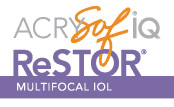 We provide comprehensive eye care to patients of all ages. Our services include not only laser vision correction and small-incision cataract surgery but also treatments for a range of conditions such as glaucoma, the diabetic eye, dry eye and macular degeneration.
We provide comprehensive eye care to patients of all ages. Our services include not only laser vision correction and small-incision cataract surgery but also treatments for a range of conditions such as glaucoma, the diabetic eye, dry eye and macular degeneration.
Regular eye exams are an invaluable tool in maintaining your eyes' health by detecting and preventing disease. Some diseases develop slowly without causing pain or vision loss. Early detection of any problems can reduce the risk of further harm and allow for a choice of treatment options.
Children should have their first eye exam at about age two, although it's never too early to test a child's vision and eye health. Comprehensive eye exams are essential in the diagnosis and treatment of vision problems, injury and disease. Early detection allows for treatment to begin before the child experiences difficulty in school due to poor vision, or before any permanent damage has been done to the eye(s). Exams test visual acuity, eye tracking, and focusing skills, and detect problems such as nearsightedness, farsightedness, amblyopia, crossed eyes, dyslexia, and color blindness.
 Patients with diabetes are at an increased risk of developing eye diseases that can cause vision loss and blindness, such as diabetic retinopathy, cataracts and glaucoma. These and other serious conditions often develop without vision loss or pain, so significant damage may be done to the eyes by the time the patient notices any symptoms. For this reason it is very important for diabetic patients to have their eyes examined once a year. Diagnosing and treating eye disease early can prevent vision loss. It is also important to maintain a steady blood-sugar level, take prescribed medications, follow a healthy diet, exercise regularly and avoid smoking.
Patients with diabetes are at an increased risk of developing eye diseases that can cause vision loss and blindness, such as diabetic retinopathy, cataracts and glaucoma. These and other serious conditions often develop without vision loss or pain, so significant damage may be done to the eyes by the time the patient notices any symptoms. For this reason it is very important for diabetic patients to have their eyes examined once a year. Diagnosing and treating eye disease early can prevent vision loss. It is also important to maintain a steady blood-sugar level, take prescribed medications, follow a healthy diet, exercise regularly and avoid smoking.
Cataract surgery is the most commonly performed procedure in the US, replacing the cloudy natural lens of the eye with a clear artificial lens called an intraocular lens (IOL). Cataracts affect millions of people each year, including more than half of all Americans over the age of 65, and cause a progressive, painless loss of vision, as well as:
We perform a minimally invasive, small-incision, no-stitch cataract surgery called phacoemulsification ("phaco") surgery. During this procedure, a tiny incision is made in the eye to make room for a small ultrasonic probe. This probe breaks up, or emulsifies, the cloudy lens into tiny pieces. The pieces are then suctioned out through the probe. Because of its small size, the incision can heal on its own and only requires a topical (eye drop) anesthesia, so there is no injections or stitching in the eye at all.
Once the cloudy lens has been removed, the artificial IOL is implanted in the eye. Advanced foldable IOLs can be inserted through the same small incision that the original lens was removed from. This significantly reduces recovery times while improving safety and reducing the risk of bleeding, scarring, irritation and distortion.
 Flexible IOLs have been used for years to help patients enjoy clear vision after cataract surgery. The advanced ReSTOR® lens improves upon ordinary IOLs by providing a full range of focusing distances. A series of 12 gradual "step heights" create seamless focusing ability from near to far, while the edge of the IOL enhances distance vision. A feature called apodization also helps the eye distribute light evenly in different lighting conditions. Best of all, up to 80% of patients who use the ReSTOR® lens don't need glasses or contact lenses after surgery.
Flexible IOLs have been used for years to help patients enjoy clear vision after cataract surgery. The advanced ReSTOR® lens improves upon ordinary IOLs by providing a full range of focusing distances. A series of 12 gradual "step heights" create seamless focusing ability from near to far, while the edge of the IOL enhances distance vision. A feature called apodization also helps the eye distribute light evenly in different lighting conditions. Best of all, up to 80% of patients who use the ReSTOR® lens don't need glasses or contact lenses after surgery.
Intraocular lenses are used to correct vision problems during cataract surgery by replacing the old, damaged lens with an artificial lens that clears up and corrects vision, often leaving patients with little to no dependence on glasses. While cataract surgery corrects cloudy lenses, it still leaves patients with astigmatism with distorted vision. Toric IOLs are specially designed to correct astigmatism along with overall vision during cataract surgery, offering complete vision correction.
Before Toric IOLs, people with astigmatism would need to undergo corneal refractive surgery after their lenses were implanted, or would remain dependent on glasses or contact lenses. The advanced Toric IOLs correct the imbalance caused by an irregular cornea shape in patients with astigmatism. There are several different types of FDA approved Toric IOLs, including AcrySof® Toric Lenses, which can correct up to 3 diopters of astigmatism.
The risks of a Toric IOL include poor vision as a result of the lens rotating out of position, although this risk exists with any type of intraocular lens. Toric IOLs are considered safe for most patients with astigmatism and are the only solution to correct vision problems associated with both cataracts and astigmatism. Talk to your doctor to learn more about these lenses and find out if you can enjoy the benefits of Toric IOLs.